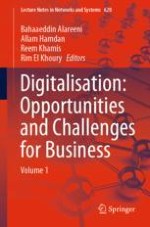This book addresses the implications of technology, entrepreneurship, and business development gadgets for applications in societies. In this book proceedings, we attempt to address the importance and impact of digitalization and on business development in the context of economic diversity, that is through various propositions of modern technology and entrepreneurial actions, and through the lens of case studies, experiments, empirical assessments, just to name a few research methodological stances and approaches.
This book highlights a range of topics in the fields of technology, entrepreneurship, business administration, accounting, and economics that can contribute to business development in developing countries, such as learning machines, artificial intelligence, big data, deep learning, game-based learning, management information system, accounting information system, knowledge management, entrepreneurship and social enterprise, corporate social responsibility and sustainability, business policy and strategic management, international management and organizations, organizational behavior and HRM, operations management and logistics research, controversial issues in management and organizations, turnaround, corporate entrepreneurship, and innovation, legal issues, business ethics, and firm governance, and firm financial affairs, non-traditional research, and creative methodologies.
This book is ideal for academicians, activists, curriculum developers, researchers, professionals, administrators, and policymakers. The readers of this book could gain an up-to-date know-how on state-of-the-modern technology, entrepreneurship, and business development and achievements in this regard from the research standpoint of view.
